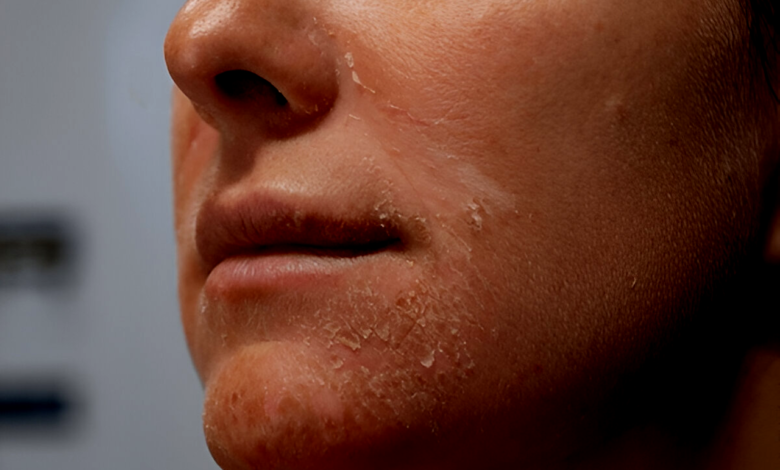
Signs of Dehydration in Pets Arkansas Summer Safety Guide
Spot signs of dehydration in pets during Arkansas summers. Learn prevention tips and emergency care to keep your pet safe in the heat.
As temperatures soar during Arkansas summers, pet owners must be extra vigilant about their furry companions’ hydration. Dehydration in pets can escalate rapidly, leading to severe health complications or even death if not addressed promptly. Unlike humans, animals cannot always communicate their discomfort, making it essential for owners to recognize the signs of dehydration in pets before the situation becomes critical. This guide will explore the symptoms, causes, prevention methods, and emergency responses to ensure your pet remains safe and healthy throughout the hottest months of the year.
Understanding the risks of dehydration and taking proactive measures can mean the difference between life and death for your pet. Whether you have a dog, cat, or small animal, knowing how to spot the signs of dehydration in pets and respond Signs of Dehydration is crucial. From recognizing early symptoms to implementing preventive strategies, this comprehensive guide will equip Arkansas pet owners with the knowledge needed to protect their beloved animals from the dangers of summer heat.
Signs of Dehydration in Pets Arkansas Summer Safety Guide
Physiological Vulnerabilities in Certain Breeds and Life Stages
Brachycephalic (short-nosed) breeds face unique challenges in temperature regulation that make them particularly prone to dehydration. Their compressed airways significantly impair their ability to pant efficiently a dog’s primary cooling mechanism. Their anatomical structure also makes them more susceptible to heat Signs of Dehydration, which can rapidly progress to life-threatening heatstroke. For these breeds, even moderate temperatures can become dangerous, and owners must be especially vigilant about providing cool environments and constant access to water.
Age-Related and Health-Related Risk Factors
Senior pets experience decreased kidney function and reduced thirst drive, making them less likely to voluntarily drink enough water. Their bodies also retain less moisture due to age-related changes in skin elasticity and cellular water content. Conversely, young Signs of Dehydration have underdeveloped. Pets with chronic conditions like diabetes, kidney disease, or hyperthyroidism face compounded risks these illnesses often cause increased urination or fluid loss while simultaneously reducing the body’s ability to absorb and retain water.
Common Signs of Dehydration in Pets
Recognizing the signs of dehydration in pets early can prevent serious health complications. One of the most reliable indicators is loss of skin elasticity. To test this, gently pinch the skin at the back of your pet’s neck. In a well-hydrated animal, the skin will snap back immediately. If it remains tented or returns slowly, your pet may be dehydrated. Another key symptom is dry or sticky gums. Healthy gums should be moist and slick; if they feel tacky or appear pale, it’s a warning sign. Signs of Dehydration eyes and excessive panting that doesn’t subside are also red flags.
Causes of Dehydration in Pets
Environmental and Physiological Stressors in Hot Climates
Arkansas summers create a perfect storm for dehydration due to high temperatures and humidity. Pets primarily cool themselves through panting, which causes significant moisture loss especially in dogs, which can lose up to 10% of their body weight in water through respiration alone. Short-nosed breeds (like Bulldogs and Pugs) are at even greater risk because their restricted airways force them to pant harder, accelerating fluid loss. Additionally, pets left outdoors without shade or on hot surfaces (like asphalt) can suffer from heat stress, which rapidly progresses to dehydration and heatstroke.
Underlying Health Conditions and Activity-Related Dehydration
Chronic illnesses such as kidney disease, diabetes, and Signs of Dehydration disrupt normal fluid balance, making pets prone to dehydration regardless of weather conditions. For example, diabetic pets produce excess urine, while kidney disease impairs the body’s ability to conserve water. Similarly, acute illnesses like gastroenteritis (vomiting/diarrhea) can lead to severe fluid depletion within hours small pets, in particular, can become critically dehydrated after just a few episodes.
Preventing Dehydration in Pets
Strategic Hydration Management
Beyond simply providing water bowls, implement a comprehensive hydration system. Use stainless steel or ceramic bowls (which stay cooler than plastic) and place them in multiple locations near resting areas, play zones, and exits. Consider adding pet water fountains, as many animals are attracted to moving water. For outdoor areas, use weighted bowls that can’t be tipped over and change water at least 3-4 times daily to prevent bacterial growth. When traveling, bring collapsible bowls and offer water every 30 minutes.
Tailored Cooling Solutions for High-Risk Pets
Create individualized cooling protocols for vulnerable animals. Brachycephalic breeds benefit from “cooling stations” with chilled tile surfaces and battery-operated fans. Fit them with cooling vests during necessary outdoor time, focusing on early morning/late evening hours. For senior pets, elevate water bowls to reduce neck strain and consider subcutaneous fluids if recommended by your vet. Small mammals like rabbits need ceramic tiles in their enclosures and fresh vegetables with high water content (like cucumber slices).
Emergency Steps for Dehydrated Pets
If you suspect your pet is dehydrated, act quickly. Move them to a cool, shaded area and offer small amounts of water. Avoid letting them gulp large Signs of Dehydration at once, as this can cause vomiting. If your pet refuses to drink, try using a syringe or dropper to administer water gently. Cool (not cold) towels applied to their belly, paws, and neck can help lower their body temperature. If symptoms persist or worsen such as continued lethargy, vomiting, or collapse seek veterinary care immediately. Severe dehydration may require intravenous fluids to restore hydration levels safely.
Read More: Methimazole for Cats: Managing Feline Hyperthyroidism
Conclusion
Recognizing the signs of dehydration in pets is essential for every Arkansas pet owner, especially during the scorching summer months. By staying alert to symptoms like dry gums, lethargy, and loss of skin elasticity, you can intervene before dehydration becomes life-threatening. Simple preventive measures, such as providing ample water, limiting sun exposure, and monitoring high-risk pets, can make a significant difference in their health and comfort. For senior pets, elevate water bowls to reduce neck strain and consider subcutaneous fluids if recommended by your vet. Small mammals like rabbits need ceramic tiles in their enclosures and fresh vegetables with high water content (like cucumber slices).
If your pet does become dehydrated, quick action can save their life. Always have an emergency plan and consult a veterinarian if symptoms worsen. Signs of Dehydration proper care and attention, you can ensure your pet stays hydrated, happy, and safe all summer long. Remember, a well-hydrated pet is a healthy pet so keep those water bowls full and watch for the warning signs!
FAQs
How can I check if my pet is dehydrated?
Gently pinch the skin at the back of their neck. If it doesn’t snap back quickly, they may be dehydrated. Also, check for dry gums and sunken eyes.
What pets are most at risk for dehydration?
Brachycephalic breeds, senior pets, young Signs of Dehydration, and those with illnesses like kidney disease or diabetes are more vulnerable.
Can I give my pet electrolyte solutions?
Only use vet-approved electrolyte solutions, as human products may contain harmful ingredients like xylitol.
How much water should my pet drink daily?
On average, pets need about 1 ounce of water per pound of body Signs of Dehydration, but this varies based on activity level and diet.
When should I take my pet to the vet for dehydration?
If they show severe symptoms like vomiting, collapse, or refusal to drink, seek veterinary care immediately.







